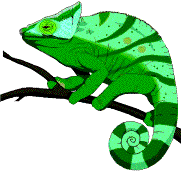

Grade Level: 6-8 grade
Content Area: Language Arts
Social StudiesScience
**Dependent upon student presentationsMusicArt
Math
Concepts: Tropical storms
Baja CaliforniaThe Black Pearl--first 30 pages
Ocean tall tales.
Goals: Students will understand why tropical storms occur and how the ocean relates to weather.
Materials: Lab report sheet from day 2
Time: 15 minutes
Procedure:
1. The students will hand in their log sheets from day 2. Once they have done this--the students will discuss some of the responses they put down.
2. Students will discuss their hypothesis with the class. To wrap up, the teacher will explain why the storms actually occur--if it was not discovered through the discussion.
3. When discussion is complete place the lab report in ocean folder.
Assessment: Success will be based on students participation (see Classroom Observation Rubric).
Phase Two: Research on
Baja Peninsula Continued
Goals:
1. Students will discover Mexico's Baja Peninsula in aspects of culture, government, environment, and economy through Internet access and other library resources. (see Guide sheets)
2. Students will teach their findings to the class through an oral presentation.
3. From their findings students will use the information to create a museum representing Baja California during day 8 and 9.
Materials: Guide Sheets dealing with culture, government, environment, and economy.
Computers with Internet accessSchool Library or local library with a variety of books, magazines, journals, etc.
Materials the students asks for to help them give their presentation.
Time: 2 1/2 - 3 hours
Procedure:
1. Students will get into their designated groups and continue researching any loose ends they feel will help their presentation.
2. After an hour of researching the students will begin to further organize their findings and begin developing a creative way to present it to the class.
3. Each group will meet with the classroom teacher to discuss their ideas on how they are going to present this information.
4. The students will begin working on their presentation.
Assessment: Student success will be
determined by if they are using the time given to them to
appropriately research the topics given to them. Success will also be
achieved by a display of teamwork/cooperation. (This will become
evident in their meeting with the teacher.)
(See Classroom
Observation Rubric)
Phase Three: The Black Pearl by Scott O'Dell
Goals: Students will discuss chapters 1-4 of The Black Pearl
Materials: copy of the book: The Black Pearl for each student
paper and pencilchalkboard
Time: 1 hour
Procedure:
1. The students will be broken into four different groups. The teacher will assign a chapter to each group.
2. In their groups, the students must come up with two to three questions about the chapter assigned to them, along with a response. *Not all question have to be factual, some maybe opinion--for example, 'Would you believe the story about Manta Diablo if your mom would have told it to you when you were younger? Why?'
3. Once the groups have finished writing questions, a student from each group will go to the chalkboard and write their questions (starting with chapter 1).
4. When all the questions are on the board the students and teachers will discuss the answers as a group.
5. When the discussion is finished students will be assigned chapters 5-11 in The Black Pearl for day four. If there is extra time in the hour, students can begin reading.
Assessment: The students success will be determined by their work in small groups and class participation in the discussion.
Goals: Students will learn about tales sailors and fisherman told about sea monsters. Students will create their own sea monster tale.
 Materials:
sample tales that fisherman or seaman have told
Materials:
sample tales that fisherman or seaman have told
paperwriting tool
The Voyage of Odysseus (an adapted version of The Odyssey)
Time: 1-1 1/2 hours
Procedure:
1. The teacher will discuss that the village people in La Paz really believed the story of the devil ray (Manta Diablo) and that these stories are often passed down from generation to generation. The students will become aware that fisherman and sailors have also passed along stories--most deal with sea monsters.
2. The teacher will share some of the tales of sea monsters in The Voyage of Odysseus.
3. After the students have heard the tales, they will write their own sea monster tale. They will have until day 6 to do this assignment.
4. Place the completed sea monster tale in the ocean folder.
Assessment: Students will be assessed by using writing rubric. (see Writing Rubric)
Extensions:
1. Sixth grade students could work together when writing the sea monster tale.
2. Students could include a drawing of their sea monster.
3. Students could pick one tale from the class to act out.
Source: Reeves, J. The Voyage of Odysseus. New York: Franklin. 1973.
ISBN#: 0-87226-091-7